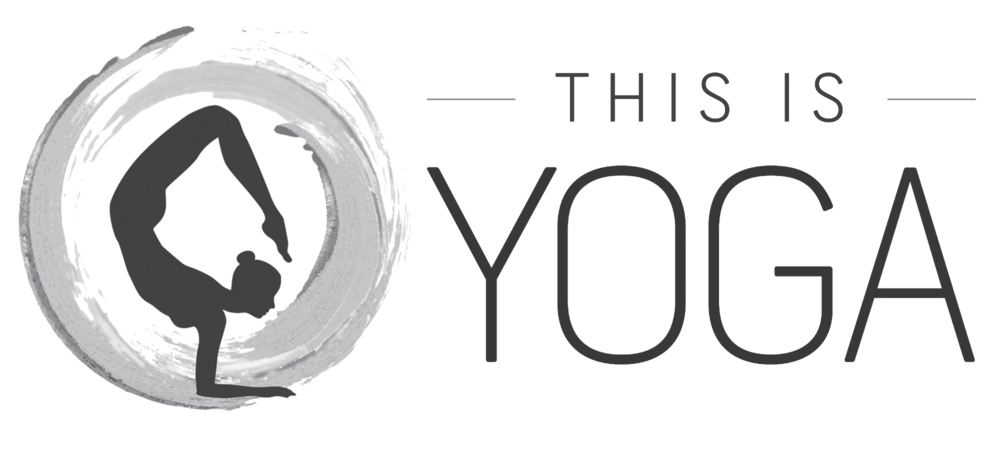The last two years has been a struggle for all of our yoga community. Lockdowns, isolation, business interruptions and home schooling has been a challenge for us all and making it through is something that should be celebrated. Despite these major life disturbances, finding joy and peace from within is a game- changer and something we all have access to.
Here’s a story about our friend Jon.
Jon’s life was changed by the teaching that joy is found within. At the time he heard it, Jon was a journalist whose favourite form of humour was cynical irony, and he had an ingrained distrust of words like joy and bliss. If you had asked him, “Have you ever been happy?” he would have called to mind a few great high school basketball games and maybe a rave he’d gone to, tripping on ecstasy, in 1993. Then he probably would have shrugged the question off, saying something edgy, like, “Only idiots are happy.”
But one day, in the yoga class he’d signed up for because his doctor told him it would be good for stress, the teacher described a posture by saying that it brought forth the innate bliss in the heart. “Innate bliss?” Jon thought. “Not in my heart.” Then the teacher started to read from the writings of an Indian guru: “What we are looking for in everything is joy, ecstasy. But ecstasy is within you. Look for it in your own heart.”
Since he was stuck in the posture with little else to do, Jon decided to bring his reporter’s investigative skills to bear on the idea. He turned his attention around, with the intention to look inside and see if what the teacher had said had any possible basis in reality. He aimed his attention into the place where he thought his heart was and even tried to visualise the pumping muscle in his chest.
To Jon’s surprise, something shifted. He felt a little current, a trickle of good feeling. The feeling then expanded into radiating warmth. Suddenly, he was ecstatic. And even more interesting, he knew exactly what ecstasy was, even though he’d never experienced it before (not counting the drug-induced kind). It turns out that joy is something that even the most hardened pessimist can recognise when he sees it.
The Joyful Truth
There are certain core teachings that can forever shift the way you see the world. “Joy is within you” is one of them. Even if you hear it in purely psychophysical terms, if you really hear it, it’s going to help you recognise one of the most empowering truths there is: It is actually possible to feel happy regardless of how the world is treating you, or how horrible your childhood was, or the fact that all of your friends are more successful than you are. You can even, this teaching implies, be happy when you’re failing at something or when you’re sick.
But as with all the great truths, your understanding of what “Joy is inside you” means is crucial. If you don’t understand
it deeply, you’re likely to mistake superficial good feeling for joy. You might also attach your joy to the circumstances that triggered it, like that evening of chanting with Krishna Das, or the weekends when you get to hang out with a particular teacher, or romantic moments with your partner, or even time spent jogging or playing basketball. Then you become addicted to those particular actions, people, or situations. Or you might make the mistake I made for years and become a sort of bliss fascist, expecting yourself to be in a “good” state all the time and subtly beating yourself up when you aren’t.
So, what are we really talking about when we discuss inner joy, and how are we supposed to approach it? In Sanskrit, there are basically four words for happiness—sukha, santosha, mudita, and ananda—each of which points to a different level of happiness. Together, they constitute a path that leads us to the kind of happiness that really cannot be shaken.
Sukha (Fleeting Pleasure)
The word for ordinary happiness—the kind of happiness that comes from pleasant experiences—is sukha. It means “ease,””enjoyment,” or “comfort” and is often translated into English simply as “pleasure.” Sukha is the happiness we feel when we’re firmly inside our comfort zone. I live on the California coast, and there are days when I wake up in the morning and look out the window and feel, well, spontaneously happy. That particular form of happiness is less likely to be present when I’m, say, circling the San Jose airport trying to find a way into the long-term parking zone so I can make my flight. The point, as every inner tradition will tell you, is that sukha, joy experienced as pleasure, is basically unreliable. Any state that depends on things going our way can disappear in an eye blink.
There’s a famous story by the writer Katherine Mansfield that perfectly describes this quality of ordinary happiness. A young wife is giving a party. As she surveys the scene she has created, she congratulates herself, because everything seems perfect—her house, the wine, the mix of guests, her nice husband pouring drinks for everyone. She realizes she is completely happy. Then she notices her husband whispering in the ear of a female guest and realizes he is setting up an assignation with the woman. Suddenly, the wife’s happiness is transformed into the agony of loss.
The story is, of course, a profound yogic parable, an illustration of why the yogic texts make such a point of warning us about the fleeting quality of ordinary happiness. Ordinary happiness—sukha—is inseparably linked with its opposite: duhkha, or “suffering.” This pain-pleasure dichotomy is one of the basic dvandvas, the pairs of opposites that plague our lives as long as we live out of duality consciousness, the feeling of being separate from others and the world. Like hot and cold, birth and death, and praise and blame, sukha and duhkha inevitably follow each other, simply because when our well-being depends on external conditions, it will always come and go. This is one of the problems the Buddha noticed, the one that led him to formulate the first noble truth.
Santosha (Contentment)
The simple yogic antidote to this problem—the endless chase after the mirage of permanent pleasure—is to go to the next level and begin to cultivate santosha, which the yogic texts translate as “contentment.” The yoga sutra considers practicing santosha essential, because it is the fastest way to still the agitation that comes from frustration, discomfort, and unsatisfied desire.
Implicit in santosha is the idea of being OK with what you have, accepting what you are, without feeling that you need anything extra to make you happy. Hard-core yoga texts like Vyasa’s commentary on the Yoga Sutra actually associate santosha with the spirit of renunciation—the absence of desire for anything other than what we need. In this viewpoint, we can achieve real contentment only when we are willing to give up striving for what is out of reach, to stop expecting more of life than it can give us, and to let go of the mental patterns that destroy our satisfaction—like comparing our skills, character, possessions, and inner attainments with those of the people around us.
I recently heard from a friend who was laid off work six months ago and has yet to find another job. Practicing santosha is a big part of his strategy for salvaging his inner state. One way he does this is by reminding himself to accept things as they are. “I make the calls,” he told me. “I send the e-mails. I make the contacts. Then I turn my attention inside, and I remind myself that the universe will always give me what I need. Once I’ve done that, then my mind can be calm about it. Sometimes I sit and breathe in ‘Trust’ and breathe out ‘Trust.'”
Mudita (Spiritual Happiness)
Practicing santosha calms the mind, and when we calm the mind, there’s a good chance that the next level of happiness—mudita—will begin to sneak through. In English, the closest translation of mudita is “spiritual happiness.” Mudita in its purest form is the joy that Jon experienced—the kind that comes from out of nowhere, like a message from our deeper self, and that actually has the power to change our state in an instant. It gives rise to a whole host of feelings, such as gratitude, exaltation, equanimity, and the capacity to see beauty even in things we don’t ordinarily find beautiful, like sidewalk litter or fast-food hamburgers.
Mudita can be cultivated, and much of spiritual practice is aimed at generating this kind of joyfulness. In one yoga studio I know, the attendance at the weekly chanting sessions is higher than at any other program. Why? Because chanting generates mudita. So do certain yoga poses and meditation practices, like mantra repetition and focusing on enlightened beings. The devotional traditions, like bhakti yoga and Sufism, specialize in the art of cultivating mudita, which can become a powerful bridge into even subtler states of awareness.
Ananda (The Bliss That Passeth Understanding)
When mudita deepens until it becomes our entire field of experience, we find ourselves in touch with the most profound level of joy: ananda. Ananda is usually translated as “bliss,” but in my opinion, the English word bliss is much too lightweight to convey what ananda really is. Ananda is ecstasy, rapture, a joy that wells up on its own from the very depths of the universe and connects us instantly to the vastness of pure being. Ananda, in other words, is divine power in the form of happiness. When you touch it, you know it—and you also know that you’ve touched the deepest level of reality.
According to the great non-dualist philosophers of the Upanishads and the Shaiva and Shakta Tantras, ananda is actually God. My teacher used to say that when you feel ecstasy surging through your veins, you are experiencing God. You can find this same association of joy with divine experience in Sufi poetry, in the Kabbalah, and running like a rich vein through the writings of Christian mystics. C.S. Lewis called his spiritual autobiography Surprised by Joy, because all of his experiences of God’s presence were experiences of absolute happiness. That’s why cultivating joy is such a direct path to inner experience: It is not only a means, it is the goal itself.
To me, this insight is the real clue, the secret of how to follow the path of joy. Begin by taking what these great teachers say seriously. Try out their understanding that joy is actually present, inherent in you and in the world around you. Then look for the practices and attitudes that can help you open yourself up to it. Joy can arrive on your doorstep spontaneously. But it can also be approached step-by-step, through a combination of practice and self-inquiry.
Making a Practice of Joy
That’s basically what Jon has learned to do. His initial state of unbidden joy didn’t last—such states rarely do. A few days later, he found himself back in his normal state of mild depression and anxiety leavened with flashes of humour, and soon the experience of joy was more a memory than a reality. But Jon couldn’t forget the experience, and he wasn’t willing to dismiss it as a fluke. So little by little, he carved out a path for himself. He read Sufi poetry. He started a meditation practice. But the real shift he made was to choose to believe that his experience of joy came from a deeper level of reality than the difficulties, pain, and general dysfunction he saw in his own mind, on tv, and in the streets of his city.
Jon developed a self-inquiry process that went something like this: “OK, I’m choosing to believe that I’ve got joy inside. But I don’t feel it right now. So what can I do about that? What part of my attitude do I need to change? What practice can I do that might help trigger that joy?”
He discovered, as most of us do in time, that it doesn’t always work to approach joy frontally, demandingly. The Siddha guru Gurumayi Chidvilasanand once compared joy to a butterfly that will come and sit on your hand but that you can never grasp or hold. Instead of trying to “get” joy, we do better when we find practices and attitudes that attract it. Most of the clues we get from our teachers about how to work with the mind are actually practices for attracting joy. Lovingkindness practice, remembering to be grateful to ourselves and others for every little boon and even for difficulties, consciously letting go of grudges—all of these help displace the sludge that builds up around the heart and keeps joy away. Even more important is the practice of noticing the stories you tell yourself, monitoring your thoughts when they create painful inner states, and using the creative power of your own mind to create inner states that are conducive to joy.
So, taking it step-by-step, the process of cultivating joy could look something like this. It begins with the simple understanding that joy is real, and then continues with the decision to tune your mind and heart so they are open enough to feel it. Depending on your state, you might need to practice some form of santosha, which for me means noticing the thoughts and feelings, the anxieties or desires, that are currently agitating my body and mind, and then doing what I can to let go of whatever resistance to my current reality is causing the agitation.
Cutting to the Chase
The next step is some form of mudita practice—chanting, prayer, going directly into the heart centre and letting the energy there expand, meditating with a loving image or visualisation, offering prayers for the well-being of others, remembering a beloved teacher, or any of countless other practices.
In the Tantric texts, one core practice—I call it a cut-to-the-chase practice—lies at the heart of all of the above. It’s very simple, it can be done anytime—while you’re in the car, washing the dishes, or even reading this magazine—and it will shift your consciousness in a very short time.
Close your eyes and remember a time when you felt really happy. Then take yourself into that moment. See if you can get a feeling-sense of yourself in the situation. Perhaps you’ll do this visually—by remembering where you were, what you wore, who was present. Perhaps you’ll do it by invoking the feeling, asking yourself, “What did that happiness feel like?” and then waiting until the feeling-sense begins to make itself present in your body. Stick with it until you actually feel the happiness—even if only a little.
Then remove the memory of the scene or situation and just feel the feeling. Find the place in your body where the feeling is centred, then let it expand until it fills you. If you’re very visual, it might help if you give the feeling a colour—a warm one, like gold or pink. Or you might work with the breath, breathing into the feeling and letting it expand on the exhalation.
Sit with this feeling of happiness. See if you can hold it. See if, for this moment, you can let the happiness become your primary feeling. This is a glimpse, however small, of your true reality.
Source Author: Sally Kempton
Source Link: https://www.yogajournal.com/poses/joy-story/















